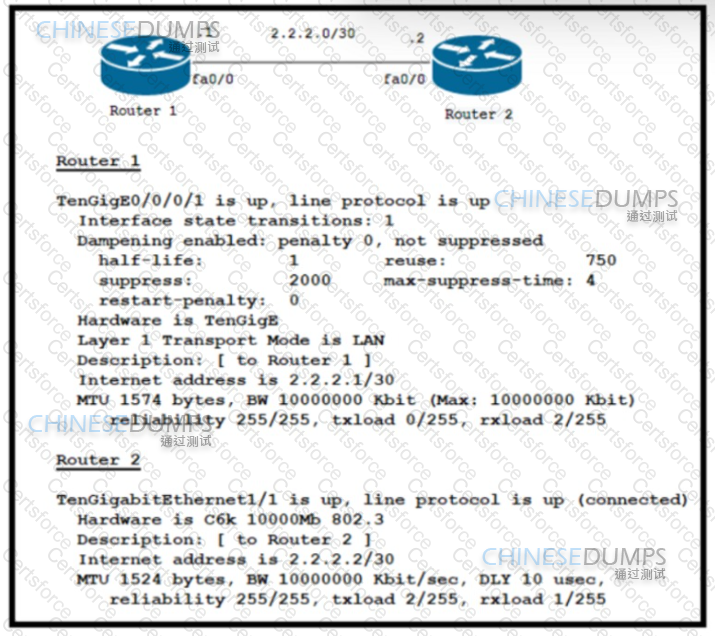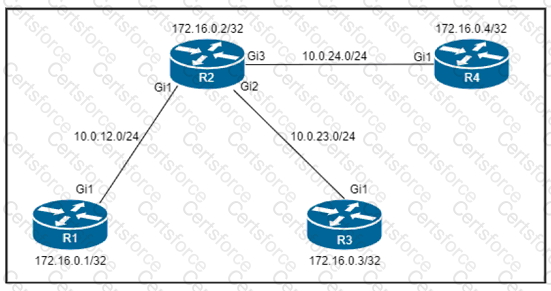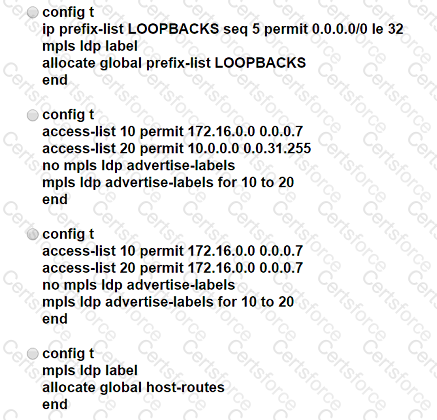
Refer to the exhibit. Router 1 and Router 2 were installed in the data center. Router 1 is the core router in the network, but it fails to establish an OSPF peering with Router 2. and customer traffic is unable to pass. Router 1 also reports an increase in CPU and memory usage. However, the CPU for R2 is stable. Which action resolves this issue?
Refer to the exhibit.

Which configuration must be applied to each of the four routers on the network to reduce LDP LIB size and advertise label bindings for the /32 loopback IP space only?

Which utility can you use to locate MPLS faults?
An engineering team must implement Unified MPLS to scale an MPLS network. Devices in the core layer use different IGPs, so the team decided to split the network into different areas. The team plans to keep the MPLS services as they are and introduce greater scalability. Which additional action must the engineers take to implement the Unified MPLS?
Drag and drop the LDP features from the left onto the correct usages on the right.

The network-engineering team of a service provider is integrating several recently acquired networks into a more scalable common Unified MPLS architecture. The new network architecture will support end-to-end VPNv4 and VPNv6 services with these requirements:
• The IGP of the core layer is IS-IS In Area 0.
• The IGP of the aggregation layers is OSPF in Area 0.
• The LDP protocol Is used to distribute label bindings within each IGP domain.
Which task must the network engineer perform when implementing this new architecture?
Drag and drop the OSs from the left onto the correct deceptions on the right.

Refer to the exhibit:

Export statistics received do not include the BGP next hop.
Which statement about the NetFlow export statistics is true?
A network engineer is implementing NetFlow to observe traffic patterns on the network. The engineer is planning to review the patterns to help plan future strategies for monitoring and preventing congestion as the network grows. If the captures must include BGP next-hop flows, which configuration must the engineer apply to the router?
BGP has been implemented on a IOS XR router. Which configuration sends BGP IPv4 labels to build inter-domain LSPs?